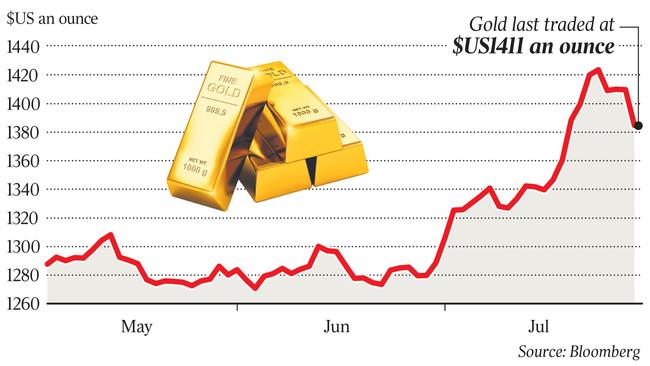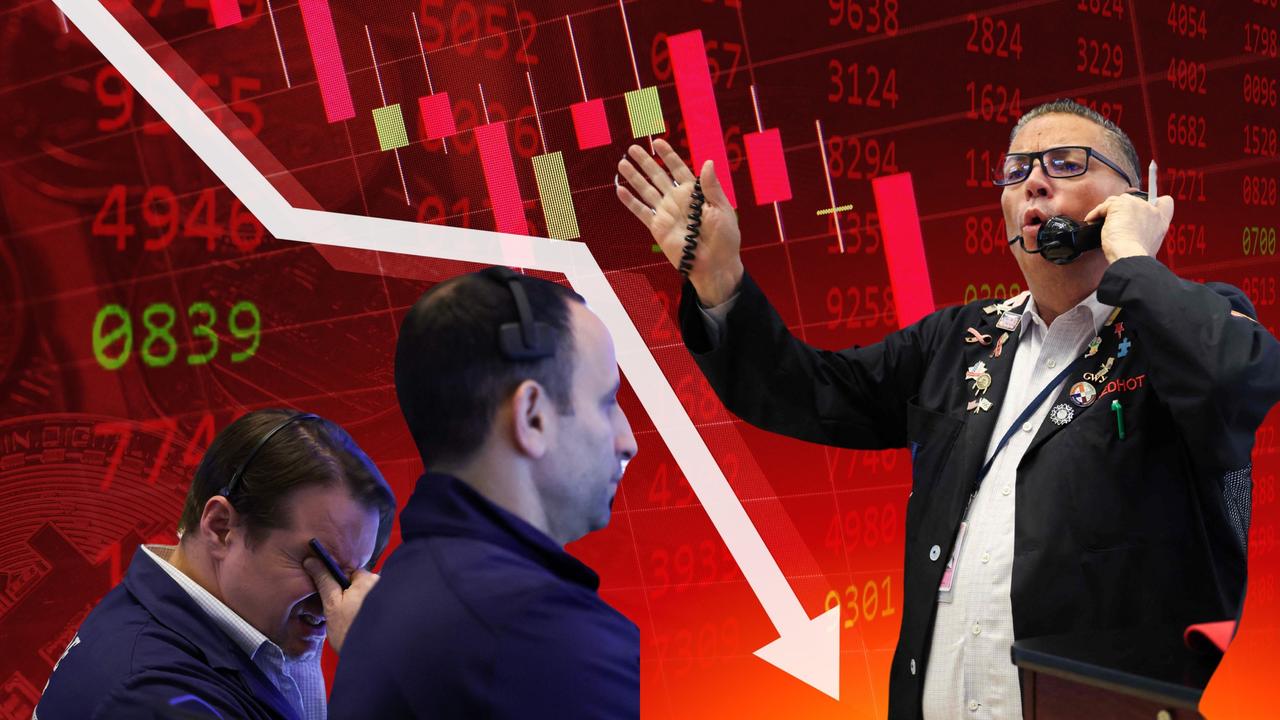Golden times as Donald Trump drives US dollar down
The stars continue to align for gold, a commodity behaving more like a currency every day.

Since mid-June the price has risen by nearly 5 per cent whether measured in US or Australian dollars, more than double the rise in the All Ords index over the same time.
For serious gold investors the real game is longer term and with a political flavour, specifically the US presidential election in November next year.
In military terms, gold has become a collateral beneficiary of a campaign launched last month by Donald Trump, who is seeking to “weaponise” the US dollar for the next stage of his attack on trade enemies, China and Europe.
Trump’s aim is the lower the value of the US dollar to aid exporters because he believes trade rivals have been doing that with their currencies to undercut US companies.
Whether Trump is right or wrong, currency manipulation by China and Europe is irrelevant because he seems determined to force the hand of the US central bank, the Federal Reserve, to drive down the dollar, starting with an interest-rate cut.
In simple terms, if Trump achieves his aim of a more competitive currency through lower interest rates, perhaps all the way down to 0 per cent, then gold will be a winner because it is already in the 0 per cent category because in its bullion form, gold does not pay interest.
Given a choice between holding 0 per cent gold and 0 per cent dollars, an increasing number of investors will make the shift away from a currency being manipulated for political purposes, and flee to the safety of an asset class beyond the reach of government, such as gold.

Russia and China, two countries in the crosshairs of the trade and ideological war being waged by Trump, have shifted from dollar-denominated assets into gold at an increasing rate.
Last month, China bought 10.3 tonnes of gold, taking its purchases this year to 74 tonnes and lifting its total stocks to 1916 tonnes. Russia has been even busier, buying 274 tonnes of gold last year to stand at 2190 tonnes.
Both China and Russia remain well behind the US gold horde of 8133 tonnes.
Powell at risk
Recent Trump tweets about the Federal Reserve have stirred concern that he is genuine in his demands for lower interest rates, and if Fed chair Jerome Powell will not deliver a rate cut he is at risk of being dismissed.
The attacks on Powell started late last year when the Fed raised interest rates against Trump’s wishes. In his latest tweets, Trump said: “We don’t have a Fed that knows what they’re doing”, adding that if rates were cut, economic growth would be “like a rocket ship”.
Another tweet from Trump accused China and Europe of being ‘‘big currency manipulators’’, followed by a call for the US to “match, or continue being dummies”.
Achieving ‘‘rocket ship’’ rates of growth imply a dramatic increase in US exports, which would come with a more competitive currency, and if we see that happen then gold will get a substantial boost. Triggers for US intervention in the currency market include a European rate cut this month, or direct European economic stimulation later in the year.
What Trump wants in the lead-up to the 2020 presidential election is a stronger US economy with currency values a key factor, and if other countries play the same devaluation game, gold will be a big winner.
Speculation about how high gold might go in a race-to-the-bottom currency war is starting to stir gold bugs with the initial target being the 2011 price high of $US1895 an ounce, but with talk of $US2000 an ounce being possible. (It is hovering around $US1400 at mid July.)
Whether gold can rise that far seems unlikely, but no more unlikely than forecasts of US interest rates diving to 0 per cent — which is actually better than the minus 0.3 per cent on some German bonds, or the negative yields on $US12 trillion ($17 trillion) of bonds around the world. The further interest rates fall the stronger the case for gold, which is why watching gold is not about looking for supply and demand measures used to value most commodities, it’s watching currency and government-driven interest rate moves.
Gold stocks to watch:
• Bellevue Gold (BGL) remains a project developer with a bright future as it redevelops the historic Bellevue mine in WA. Over the past month, the stock has added 7c (11.5 per cent) to 67c, but did reach a 12-month high of 74c in late June.
• Independence Group (IGO) has risen by 11 per cent to $4.92 thanks to its well-balanced mix of gold and nickel assets. As a general rule, when gold is rising, base metals such as nickel and copper are falling, though in the current market both gold and nickel are trending up.
• Capricorn Metals (CMM) was heavily sold down over the past 12 months because of internal management disputes over how best to develop its flagship Karlawinda project in WA. Capricorn has just seen a new and experienced management team take control, and has received an injection of fresh capital, which has boosted the share price, with more likely to come.
Gold sector leaders such as Northern Star (NST), Evolution (EVN), Newcrest (NCM) and St Barbara (SBM) have all risen strongly this year. In most cases, their share prices are well ahead of the gold price.
Tim Treadgold is the resources correspondent at Eureka Report which is owned by www.investsmart.com.au



The stars continue to align for gold, a commodity behaving more like a currency every day, thanks to the intervention of governments.